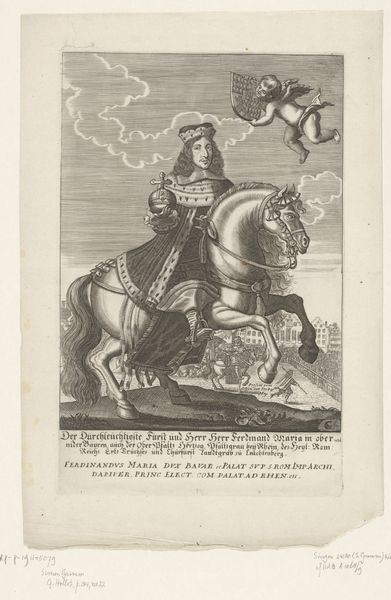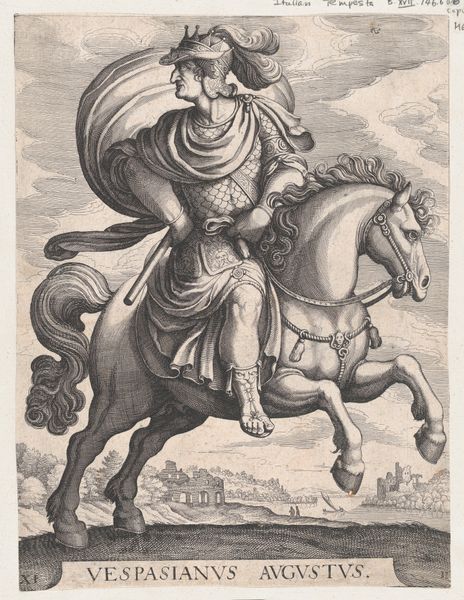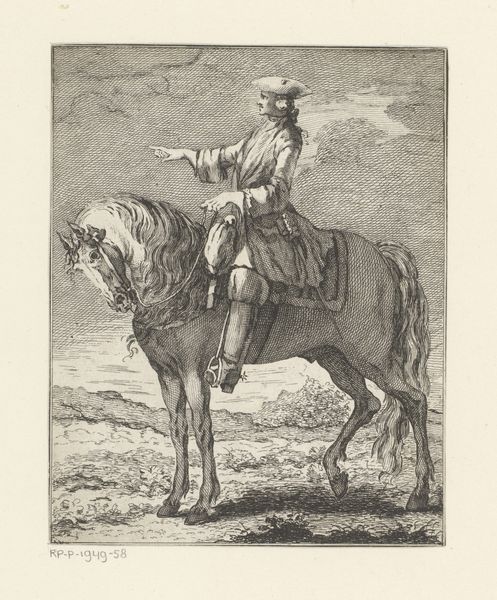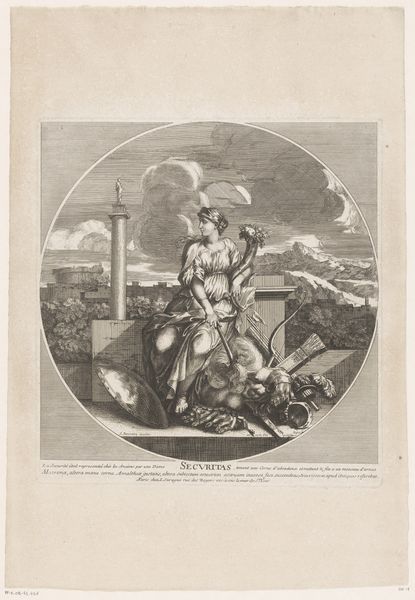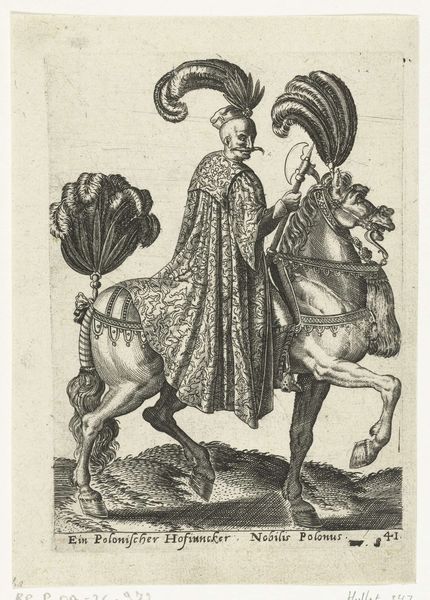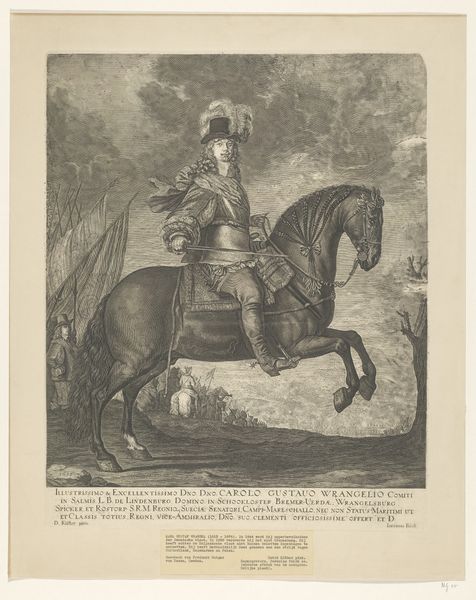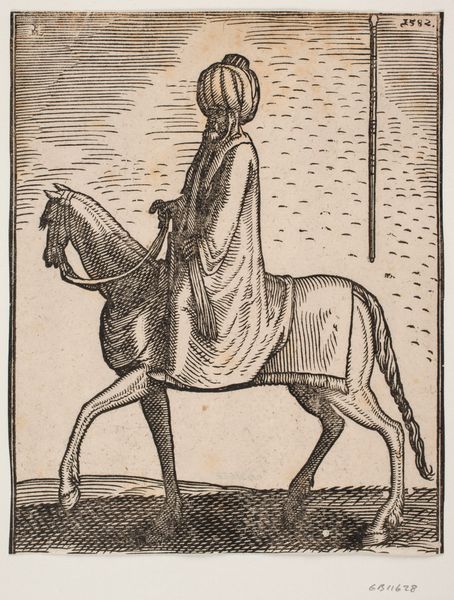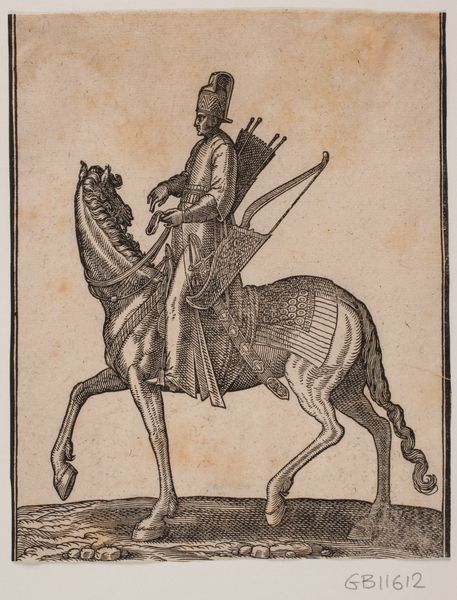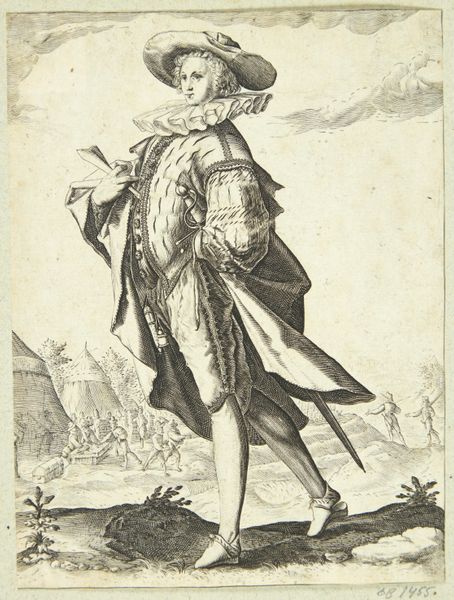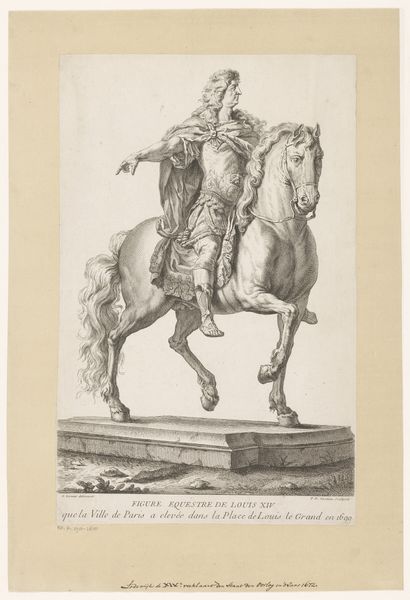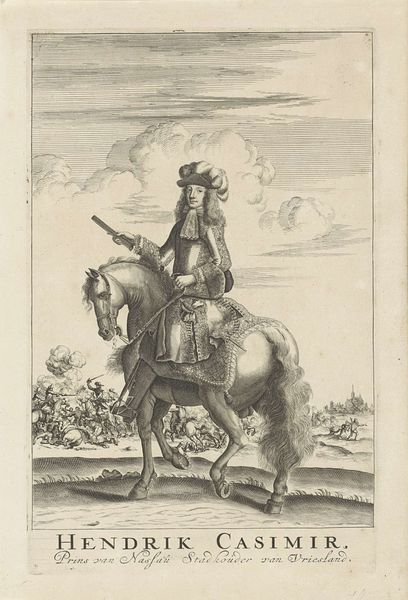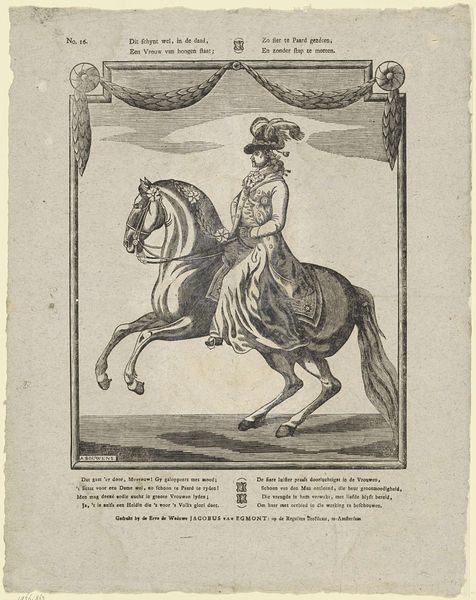
print, engraving
#
portrait
#
baroque
# print
#
figuration
#
history-painting
#
engraving
Dimensions: height 300 mm, width 184 mm
Copyright: Rijks Museum: Open Domain
Curator: This engraving, dating from 1745 to 1756, presents a regal depiction of Maria Theresa, attributed to Martin Engelbrecht. It's part of the Rijksmuseum's collection. Editor: It's quite striking! Maria Theresa brandishes a sword atop a rearing horse, against a somewhat idyllic landscape featuring a castle in the background. The impression is one of power and assured dominance. Curator: Absolutely. Consider the context—Maria Theresa’s reign was marked by significant challenges to her legitimacy, particularly following the death of her father, Emperor Charles VI. This print serves as visual propaganda, projecting an image of strength. It presents her not just as a ruler, but as a warrior queen ready to defend her lands. Editor: The sword raised high… such a powerful symbol! It immediately brings to mind depictions of Joan of Arc or Britannia—female figures embodying national strength and resolve. I’m curious, does this imagery play into established archetypes, shaping public perception of her rule? Curator: Indisputably so. Engelbrecht and his contemporaries consciously constructed Maria Theresa’s image for public consumption. These symbols—the horse, the sword, even the landscape as representing the territories under her domain—were carefully chosen to foster a sense of stability and legitimacy during a tumultuous period. Prints like these played a crucial role in disseminating her carefully crafted persona. Editor: And the landscape! Though rather diminutive in the image as a whole, the castle seems to signify history and stability of dynastic rule, reinforcing this same sense of legitimacy. It’s remarkable how even background details contribute to a grand narrative. Curator: Precisely. What appears as simple background adds crucial support to the political messaging. It’s a prime example of how visual culture becomes a vital instrument in solidifying power. Editor: Considering how widely distributed prints were at that time, this image likely shaped perceptions of Maria Theresa across Europe. Curator: Indeed. Prints offered a relatively affordable means to circulate political images, shaping public sentiment on a broad scale. Editor: Well, examining this engraving reminds me just how much history is packed into visual imagery and it provides us insight into the political narratives artists once helped shape. Curator: For me, it highlights the constructed nature of power. It makes one consider how leaders utilize symbolic representations in visual media to impact not just governance, but public perception and even history itself.
Comments
No comments
Be the first to comment and join the conversation on the ultimate creative platform.
